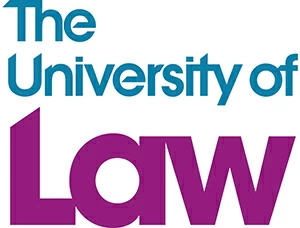
Why Should You Become A Lawyer?
September 19, 2023
Breaking the Speed Limit Penalties in the UK
September 19, 2023Performing thorough research plays an important and pivotal role in personal injury cases and being a personal injury attorney. It is essential for law students. Personal injury cases have a wide spectrum of situations that require a deep understanding of the law. It is important to perform effective research that allows students to establish a legal foundation, identify relevant precedents, quantify damage, and create compelling arguments.
Being able to hone in on research skills will empower law students to be able to advocate effectively on behalf of the injured party.
The Fundamentals of Legal Research for Personal Injury Cases
Proper and effective legal research involves several important components that can form a comprehensive understanding of the legal landscape.
- Case Law: Judicial decisions of past legal cases provide valuable precedents that shape the way that laws are interpreted and applied. It is important to analyze these cases to provide a better foundation for your personal injury case.
- Statutes: Statutes represent written laws enacted by legislatures. These laws shape the rules and regulations that govern various aspects of society. It is important to have accurate interpretations of statutes to be able to lay the groundwork for legal arguments.
- Regulations: These are rules issued by administrative agencies to provide guidance on statutes. These regulations offer practical details that help to clarify the application of laws.
- Secondary Publications: Make sure to read articles, books, and other secondary material to get a full understanding of personal injury cases.
It is very important to study all types of legal content in order to fully prepare to become a successful and prominent personal injury attorney.
Step-by-Step Guide to Conducting Legal Research
1. Identifying Relevant Precedents
A precedent is often referred to as case law. It holds quite a bit of significance in shaping legal arguments and decisions. It shows past court rulings and serves as a guiding principle for current and future cases. A precedent shows consistency within the legal system, and fosters predictability, stability, and fairness.
It is important to understand case law (precedent) because it provides a framework for legal reasons and arguments. When a personal injury attorney comes across a new case that has similarities to a prior case, they can analyze the ruling and apply it to their current case.
2. Analyzing Precedents
Learning how to critically evaluate cases for relevance and applicability is one of the most essential skills in creating a strong legal argument. You have to carefully understand the legal issue in order to study past cases. In order to find precedents you have to be able to identify the specific elements, principles and statutes relevant to your research.
There are a couple of things to consider when trying to evaluate precedents:
- Jurisdiction: A ruling from a higher court is going to have more weight than coming from a lower court. Try to find a similar case that is from the higher court as possible.
- Recency: The more recent the better! If you find a case that is 30 years old it won’t hold as much weight as a case that is 3 months old. Make sure that you are paying attention to the date of the ruling.
- Similarities: Fully understand the similarities of the case. This process ensures that the chosen precedent provides meaningful support for your argument.
Analyzing the case law thoroughly is the only way to adequately provide a professional and cohesive argument for your case.
“Legal research is the cornerstone of building a strong case for our clients in personal injury matters. Every precedent we find, every argument we craft, is a step closer to securing the justice our clients deserve. It’s not just about the law; it’s about using it strategically to make a difference in the lives of those we represent.” – Erika Garnes, Abogados De Accidentes De Carro Y Lesiones En Miami.
3. Exploring Statutes and Regulations
Statutes and regulations are paramount for your personal injury case. If you are interested in crafting well-founded arguments and the pursuit of justice then you will study these legal instruments.
Statutes and regulations serve as foundation pillars that establish the legal parameters that govern the rights, liabilities, and remedies of the people involved in the personal injury case. Statues are the overarching legal framework that essentially guides personal injury claims, and defines key concepts of negligence, liability, and the statute of limitations.
While regulations provide detailed instructions on how statutory laws are supposed to be executed and even enforced.
4. Secondary Sources: Leveraging Commentary and Legal Journals
Primary sources are statutes, case law, and regulations – which is absolutely essential. However, there are also secondary sources that are important as well. Secondary sources are material such as legal commentary, articles, and journals. These secondary sources have the ability to enhance and construct a well-informed argument.
Secondary sources as an interpreter for legal issues. It is important to engage with secondary sources because it can empower law students to comprehend the evolutions of legal principles and elevate different viewpoints – which is essential for creating a strong case.
Building Strong Arguments Using Legal Research
1. Issue Identification and Formulation
Thorough legal research plays a crucial and pivotal role in understanding the key legal issues that are wrapped in a personal injury case.
The first thing that law students should understand is to look at case law. It might seem tedious or exhausting but it is essential for creating a solid foundation for your case. Properly placed case law can win your current case! Researching case law is a necessary step in pinpointing recurring legal issues and establishing a baseline for your argument.
2. Constructing Compelling Legal Arguments
Building a strong legal argument through the utilization of precedents and statutes is a difficult but necessary process in personal injury claims. It is essential to meticulously identify and analyze precedents that mirror the circumstances of your current case.
An important step is extracting the core principles, standards, and interpretations that underlie the precedent and statutes.
Now take all of your acquired knowledge to create a coherent narrative that supports your argument. Make sure you clearly outline the analogies between the precedent cases and your current case.
3. Counter Arguments and Counter-Counter Arguments
It is important to address counterarguments within your legal argument. It proves that you have done your research and you know what the opposite side it going to say. It proves that you have intellectually studied your case backward and forwards. By recognizing opposing viewpoints and engaging with them constructively you can illustrate comprehensive knowledge of your case.
If you are able to understand what the opposing side is going to say then you can share your argument even more thoroughly. You can preemptively weaken opposing viewpoints which can leave a little bit of doubt. A proactive approach will demonstrate a mastery of the subject matter.
Significance of Legal Research
In this article, you read the importance of rigorous legal research in personal injury cases. It is crucial to read, research, and study statutes, case law, regulations, and secondary sources to fully create a comprehensive argument for your current case.
Author Bio:
Erika Garnes is a seasoned legal professional at Abogados De Accidentes De Carro Y Lesiones En Miami. With a deep passion for advocating on behalf of accident victims, Erika brings extensive expertise in personal injury law and a relentless commitment to securing justice and fair compensation for her clients. Her profound understanding of the complexities of car accident cases, coupled with her empathetic approach, makes her a trusted ally for those navigating the aftermath of accidents and injuries.





